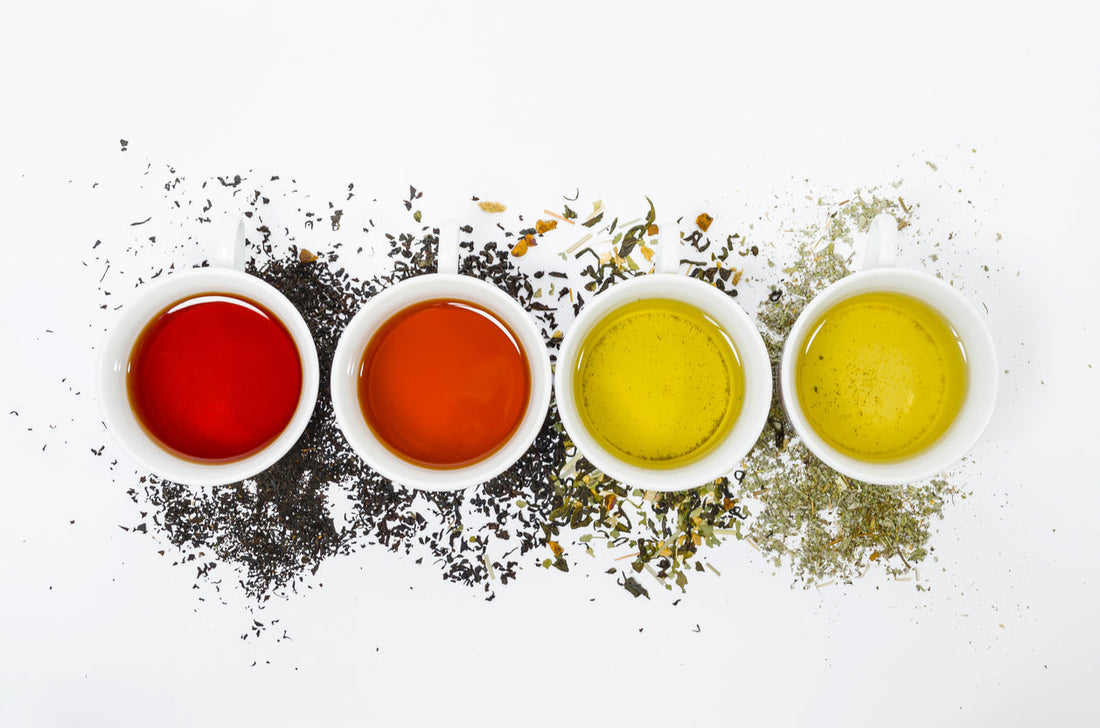
Tea - A Healthy Beverage
Michele Lillie
Recently, the Food & Drug Administration (FDA) has added tea to its list of “healthy” beverages. This is a significant development for those of us in the tea world. In this post, let’s discover why that is so.
As a retailer of tea, we at English Tealeaves are prohibited by the FDA from making any claims about specific health benefits from drinking tea unless the claims have been evaluated and approved by the FDA. To date, the only health claim that has been partially approved is for drinking green tea and breast cancer. This is termed a “qualified” health claim and is accompanied by this statement from the FDA:
“Green tea may reduce the risk of breast or prostate cancer, although the FDA has concluded that there is very little scientific evidence for this claim.”
Although scientists in the tea industry continue to study how tea may affect our health, there is no scientific evidence to support any particular health claim.
Recently, however, the FDA has updated its Food Labeling regulation and the Dietary Guidelines for Americans to allow tea to be listed as a healthy beverage option. This only applies to tea made from the leaves of the Camellia sinensis plant and not to herbal or fruit teas. Also, the tea must contain no more than five calories per serving.
Why is tea considered healthful? To answer this, we need to look into the chemistry of tea. Although this is an incredibly involved topic, this post will attempt to simplify it to aid in your understanding. This discussion begins with the fact that tea contains certain natural compounds in the tea leaves, which many believe have health benefits.
Polyphenols
These substances add flavor and mouthfeel to your cup of tea by contributing bitterness and astringency.
There are different types of polyphenols in tea, but the largest and most significant are called Flavenoids and a subcategory called Flavenols. Within flavanols are chemicals called Catechins.
These possess some very strange-sounding names, including:
- Epigallocatechin-3-gallate – EGCG
- Epicatechin – EC
- Epicatechin-3-gallate – ECG
- Epigallocatechin – EGC
- Gallocatechin – GC
These are produced by plants as a form of insecticide, fighting off bacteria, insects, and other pests.
They are felt to have beneficial antioxidant effects on the human body.
The levels of these catechins vary depending on the cultivation and processing methods used for the tea leaves. The most important of these catechins is EGCG and green tea is known to have the highest level, with lower levels in teas that undergo more oxidation, such as black tea.
 "
"Amino Acids
These compounds in tea play a crucial role in developing aromas, as well as contributing to the sweet and umami character of your cup of tea.
The most abundant amino acid in tea is L-theanine. It is an interesting chemical as, to date, it has only been found in three plants.
- Camellia Sinensis
- A particular mushroom
- Ilex guayusa (a member of the Holly family)
The amount of L-theanine in the tea depends on the tea plant varietal, the terroir where the tea is grown, as well as cultivation methods. For example, the level increases when the tea is grown in shade rather than full sun.
L-theanine has been shown to induce a relaxed and calm state in those who consume it. In fact, the combination of L-theanine and caffeine, as found in tea, is thought to help us stay focused and alert while still remaining calm.

Other chemicals
Tea also includes many other beneficial chemicals, including vitamins and minerals.
Calories
The absence of calories in a cup of tea made from the leaves of the tea plant, without any additives, is one of the reasons the FDA has agreed to give it the “healthy” label.
Besides the possible health benefits of these chemicals, they also contribute to whether your cup of tea is enjoyable or not. Since catechins can make your cup bitter and astringent, but amino acids contribute a smoother and sweeter flavor, the ideal cup of tea is one where these different compounds are in balance. This is referred to as the TC/AA ratio, which represents the ratio of tea catechins to amino acids. If the catechins are too high, your cup might be too bitter to drink. If you are unable to drink the tea, you will not receive any health benefits.
To get a more balanced TC/AA ratio, try the following.
- Buy high-quality loose-leaf teas. Lower-quality teas are known to have the risk of producing a cup with a bitter taste due to a lower level of amino acids. This allows the catechins to predominate.
- Brew your tea properly.
- As you brew tea, almost all of the amino acids are extracted within three minutes. Catechins extract more slowly and continue to infuse into the liquor the longer you brew. This leads to an increased TC/AA ratio. This is especially true for more lightly oxidized teas, such as green teas and light oolongs, as they typically start with higher levels of catechins.
- The hotter water you use to brew your tea, the more catechins (and caffeine) will infuse from the leaves into the water. This will increase the possibility of a bitter cup due to increasing the TC/AA ratio.
- In summary, brewing poor-quality tea or brewing at too high a temperature or for too long can cause more catechins to infuse into the liquor, resulting in a bitter flavor.
We can now proudly say that Tea is a healthy beverage as long as it fits the requirements outlined above. We hope that this, along with the delicious flavor, will encourage you to drink more high-quality tea. Come see us at English Tealeaves, and we will be happy to help you get started, or if you are already a tea drinker, we can help you expand your repertoire.